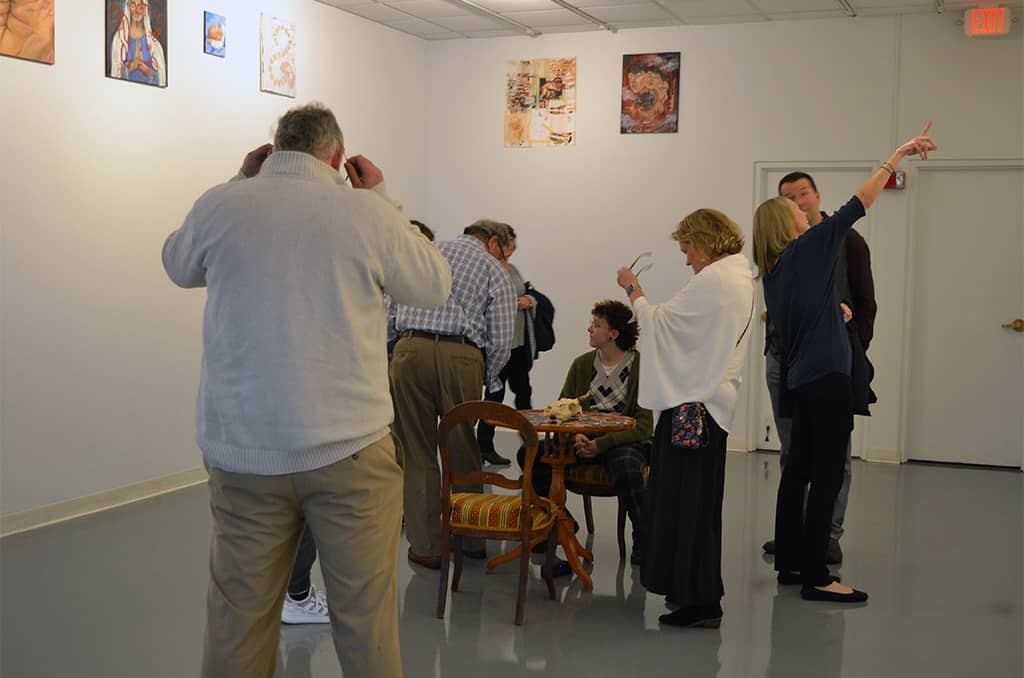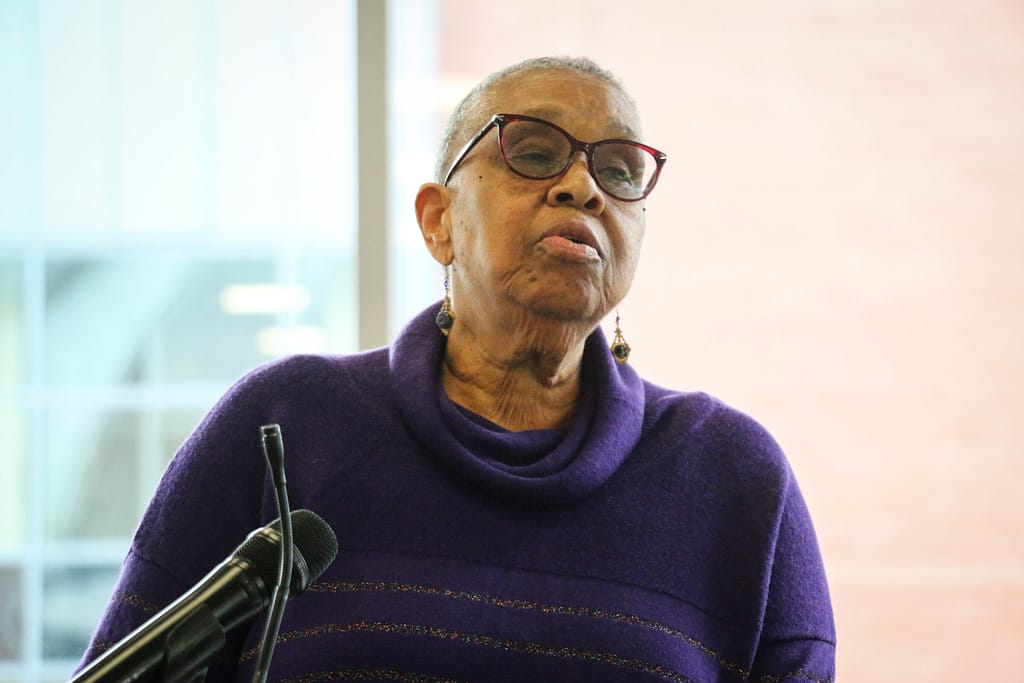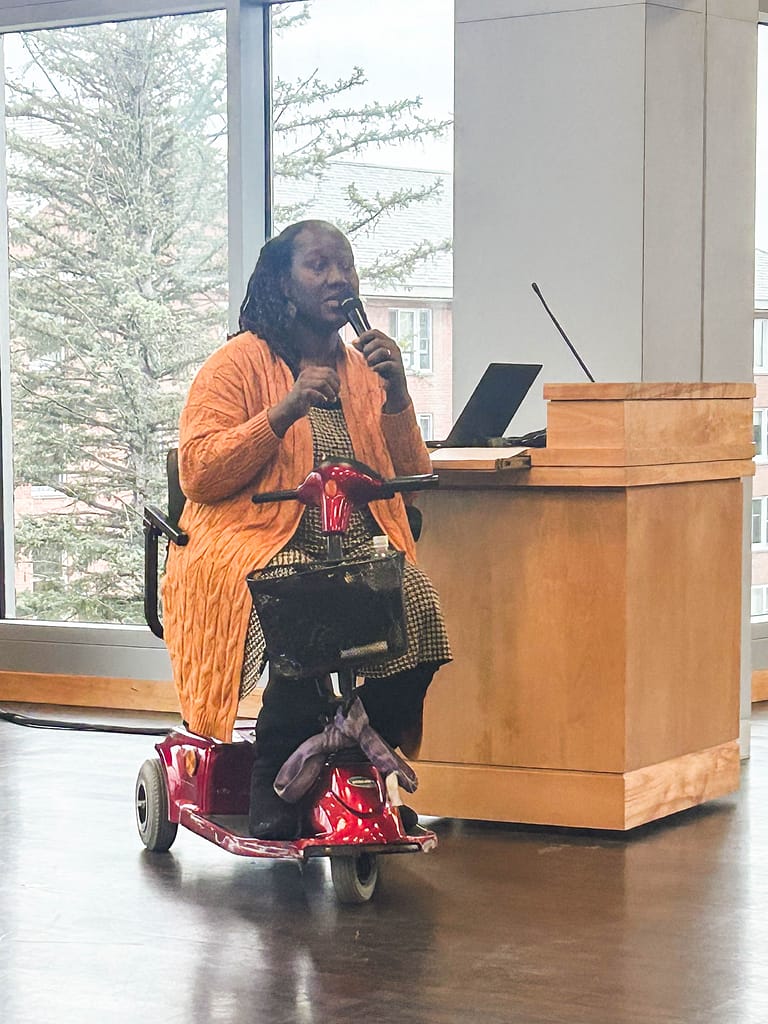Junior Seminar teaches stories through craft
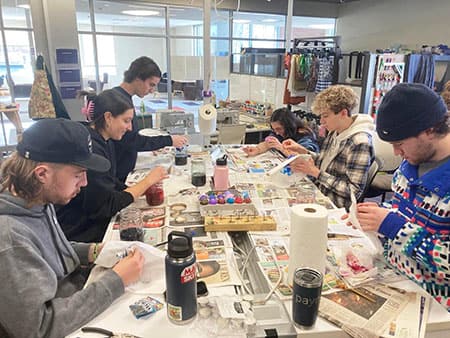
Seminar students decorate eggs in the Maker Space. (photos by Maura D’Amore)
The spirit of the liberal arts infuses life and learning at Saint Michael’s College, but few places as prominently as in the First-Year and Junior Seminar courses. Both are staple experiences on campus that bring students out of their chosen main areas of study to hone broader passion and excitement for learning.
A recent Junior Seminar course offers a strong example. Maura D’Amore of the English faculty and pioneer of the Junior Seminar “Rhetorics of Craft” takes students through the distinctive art of storytelling that incorporates a range of creative crafts.
“Junior Seminars make space for thinking and reflection, and foster opportunities for intellectual exchange,” said D’Amore, who encourages juniors to take Seminars outside their primary field of study to gain new knowledge on subjects that might not otherwise be available to them, and to broaden their group of peers.
D’Amore has taught Rhetorics of Craft once before, but this spring semester 2023 is the first time she has taught it in-person. The last time she taught the course, it was over Zoom while the College was doing online classes during the pandemic, so this semester is particularly exciting for her with the important added in-person dimension. Besides meeting in person for regular class, seminar students can utilize campus resources like the Maker Space, a creative space on the first floor of Dion Family Student Center where students can go to explore anything from 3D-printing to sewing to creative engineering.
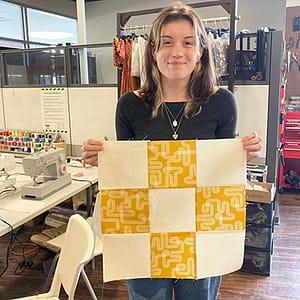
Rosemary Marr ’23 in the Maker Space with her contribution to a class quilt.
The Maker Space has been home to the Rhetoric of Craft classes for much of their crafting this semester. “I have really loved working with Solomon Garza, our new Maker Space director, this semester, and I’m looking forward to consulting more with him to think about projects that might utilize resources in that space,” D’Amore said.
She praised her students for fostering a sense of community in the classroom, especially through the shared quilting project. “There was a camaraderie and generosity in the air, and a shared sense of purpose. It felt like a true community,” she said.
The inspiration for the course stemmed from D’Amore’s own hobbies, as well as what she has observed students enjoying over the years. “I spend a lot of my free time making things: quilting and drawing, crocheting and painting,” D’Amore said, “From conversations with students over the years, I knew that many of them also have creative interests and hobbies. “
She said in recent years she has become more interested “in intersections between critical and creative practices, and when I started researching children’s crafts in the nineteenth century, I came across a sub-field of critical writing on rhetorics of various crafts: the study of how they speak, to whom, and to what ends.” D’Amore said this inspired her to create a Junior Seminar surrounding this sub-field of nineteenth century craft: Rhetorics of Craft was born.
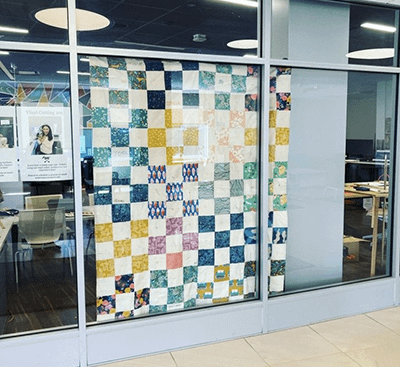
The completed quilt on display in the window of the Maker Space.
The focus of the course reaches beyond simply “crafting” with peers, though that is a large aspect of the class. D’Amore explained how the class divided this semester between “headwork” and “handwork,” emphasizing the importance of understanding craft history and theory alongside doing the actual craft work. “A central question is at the center of our course is, “By what means and methods does craft intervene in contemporary discourse?” she said.
“We also consider how craft celebrates the seemingly ‘empty’ time of planning and drafting as integral to the final product,” she said. Often, D’Amore feels, academics spend less time than is optimal considering the brainstorm, outline, and rough draft stages that go into creating a final product. However, all of those steps are essential to the learning process, D’Amore said, and she seeks to celebrate them through the vivid example that craft work offers.
“The vibe is really wonderful, and the experience has filled me with hope: I’m trying to think of ways to carry this energy and pedagogy into my other courses,” said D’Amore, who admires her students for allowing such a fun environment to thrive throughout the course. “I love this class and look forward to it every week,” she said.
In terms of students who are thinking about what Junior Seminar courses to take, D’Amore said, “Don’t be afraid to step outside your comfort zone and try something new. College is a really special time, and Junior Seminars are designed so that everyone can participate and experiment together.”
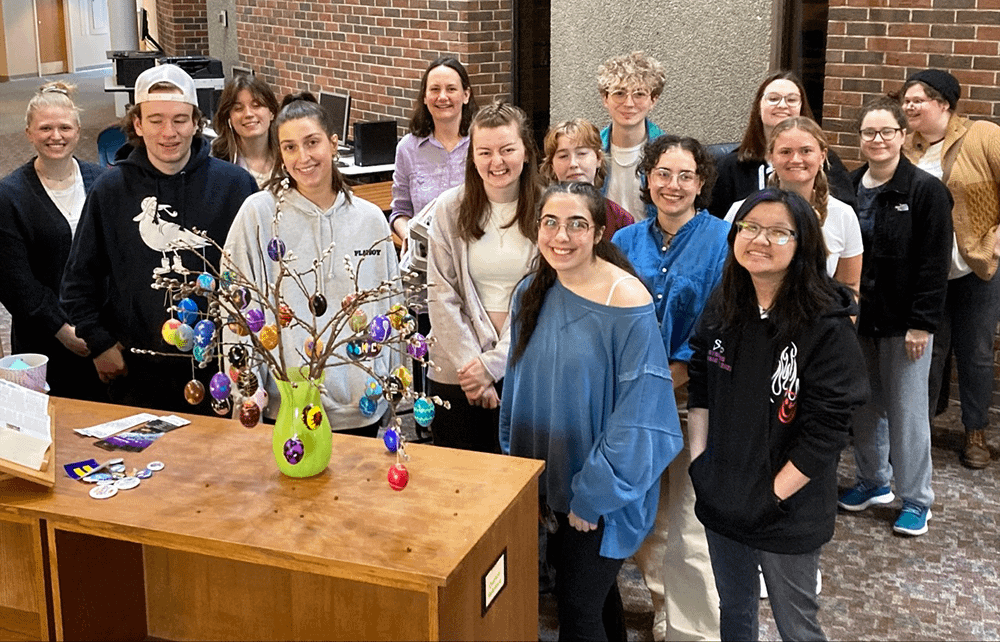
Students with Professor D’Amore (back row center in lavender shirt) in Durick Library for class this semester.


